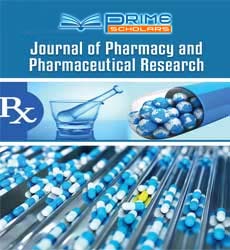Commentary - (2022) Volume 6, Issue 6
Reverse Pharmacognosy Effectively Uses Traditional Medicines and Natural Products as Promising Sources to Provide Guidance for New Drugs
Jack Tonie*
Department of Pharmacy, University of Bahir Dar, Ethiopia
*Correspondence:
Jack Tonie,
Department of Pharmacy, University of Bahir Dar,
Ethiopia,
Email:
Received: 30-Nov-2022, Manuscript No. IPIPR-23-15434;
Editor assigned: 02-Dec-2022, Pre QC No. IPIPR-23-15434 (PQ);
Reviewed: 16-Dec-2022, QC No. IPIPR-23-15434;
Revised: 21-Dec-2022, Manuscript No. IPIPR-23-15434 (R);
Published:
28-Dec-2022, DOI: 10.21767/IPIPR.22.6.29
Description
Pharmacognosy occupies an important place in pharmacy as it
deals with the collection, identification, preparation and extraction
from natural sources of a large group of medicinal products used
in both conventional and traditional medicine. A thorough understanding
of the working principles of natural medicines as chemicals
is essential to a successful pharmacist. Due to the fact that the
solubility, reactivity, stability, toxicity, dosage, availability, purity,
yield, methods of isolation, purification and identification of naturally
occurring chemicals are studied in herbal medicine, they can
provide general information about Pharmacognosy, the science of
medicines of natural origin, has therefore become an increasingly
important area in the curriculum of pharmaceutical education,
and may even form the basis for the development of other areas
of pharmacy. Pharmacology, medicinal chemistry, and pharmacy
are all medical manifestations and offshoots of this basic science.
Knowledge of drug effects (pharmacology) can only be used effectively
if the drug’s identity, physical properties, and chemical
composition are known, and pharmacognosy provides this information.
Practices were held all over the world. Ingredients depend
on what is readily available to those around you. The chemical
properties and properties of chemicals can be studied and understood
by pharmaceutical chemists. Alternatively, a chemical can
be synthesized and its activity altered or improved, given sufficient
knowledge of its source, occurrence, method of isolation, and
state of purity. This knowledge is available from your pharmacologist.
The formulation and actual preparation of pharmaceuticals
depends on many properties such as: Solubility, stability, reactivity,
etc. Pharmacists with sufficient knowledge of herbal medicine can obtain such information on naturally occurring substances.
At the beginning of the 21st century, especially in Western Europe
and North America, the explosive growth in the use of herbal
remedies (phyto-pharmaceuticals) in modern pharmaceutical
practice has given pharmacy education a new relevance in academic
pharmaceutical institutions. I have been carrying In turn,
the field of pharmacognosy research continues to expand and
now includes, in addition to the more traditional development of
analytical methods and phyto-chemistry, cells and molecules relevant
to natural products, ethnobotany, and phyto-therapy. Biology
aspects are included. In this review, we present promising bioactive
compounds from two of his multidisciplinary natural product
drug discovery projects aimed at elucidating novel plant-derived
cancer chemotherapeutic agents and novel cancer chemo preventive
agents, respectively. Complementing pharmacognosy, reverse
pharmacology combines High-Throughput Screening (HTS), virtual
screening, and databases with conventional medical knowledge.
These strategies lead to the identification of large numbers of in vitro active and selective hits, increasing the speed of drug discovery
from natural sources. Also, reverse pharmacology is a goal-based
approach to drug discovery. In a first step, it is hypothesized that
altering a specific activity of the protein would have a beneficial
therapeutic effect. Both reverse pharmacology and reverse pharmacology
use high-tech methods to achieve their respective goals.
In addition, reverse pharmacognosy effectively uses traditional
medicines and natural products as promising sources to provide
guidance for new drugs, and the pharmacological profile of traditional
medicines, plant extracts, or natural products promoting
rational use with valuable information such as protein structure
databases and chemical libraries.
Acknowledgement
The author is grateful to the journal editor and the anonymous
reviewers for their helpful comments and suggestions.
Conflict of Interest
The author declared no potential conflicts of interest for the research,
authorship, and/or publication of this article.
Citation: Tonie J (2022) Reverse Pharmacognosy Effectively Uses Traditional Medicines and Natural Products as Promising Sources
to Provide Guidance for New Drugs. J Pharm Pharm Res. 6:29.
Copyright: © 2022 Tonie J. This is an open-access article distributed under the terms of the Creative Commons Attribution License,
which permits unrestricted use, distribution, and reproduction in any medium, provided the original author and source
are credited.

